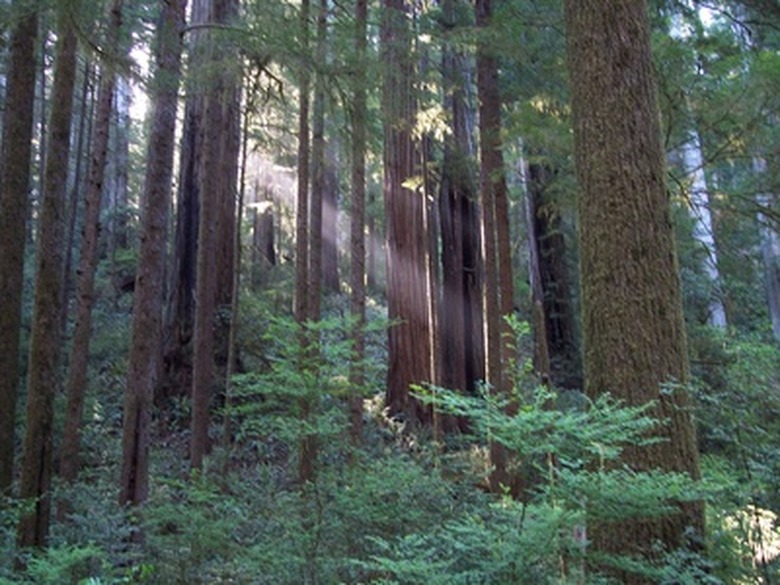Coastal Redwood Tree Diseases
When grown in its natural environment, the coast or coastal redwood tree (Sequoia sempervirens) is susceptible to few diseases. However, many redwoods are grown as landscape trees in conditions that are quite different from the forest. While these trees may survive, inappropriate growing conditions put them in a constant state of stress that leaves them vulnerable to a number of diseases.
Sudden Oak Death
Sudden oak death (Phytophthora ramorum, also known as ramorum blight or dieback) is a virulent disease that affects a variety of species, including the coast redwood. Infected redwoods experience extensive twig dieback that turns the attached leaves brown. Shortly thereafter, the coast redwood will die. There is no cure for sudden oak death. The best course of action is to uproot and destroy the tree to prevent the spread of infection.
- When grown in its natural environment, the coast or coastal redwood tree (Sequoia sempervirens) is susceptible to few diseases.
- The best course of action is to uproot and destroy the tree to prevent the spread of infection.
Phytophthora Root Rot
Phytophthora root rot is caused by a soil-borne organism. When first infected, the coast redwood's foliage may wilt, yellow and dry out but remain on the tree. The leaf damage is because of the slow death of the redwood's roots, which limit its ability to absorb adequate amounts of water. Eventually, the entire tree will turn brown and is unlikely to recover. If caught early enough, phytophthora root rot's presence in the soil may be managed, or at least reduced, with the application of a fungicide containing potassium phosphate. But this is not always successful.
Armillaria Root Rot
Armillaria root rot rarely infects healthy coast redwoods. But stressed, under- or overwatered redwoods may fall prey to this disease. This soil-borne disease enters the plant through the roots, where it may be years before symptoms become noticeable. An infected coast redwood may slowly decline over a period of years, section by section. Or it may suddenly wilt and then die in a few weeks. To identify armillaria root rot, pull back the tree's bark. Infected trees will have white or yellow fan-shaped mycelium growing between the bark and the wood. There is no cure for armillaria root rot. Infected trees should be uprooted and destroyed and the soil sterilized before another tree is planted in its place.
- Phytophthora root rot is caused by a soil-borne organism.
- When first infected, the coast redwood's foliage may wilt, yellow and dry out but remain on the tree.
Botryosphaeria Canker
This fungus feeds on the cambium, sapwood and inner bark of weakened trees, forming large cankers. As these cankers grow, the fungus develops pimply black fruiting structures. The cankers will eventually girdle the branch, cutting of the nutrient supply to the leaves. To get rid of botryosphaeria canker, prune away the infected plant tissue.
